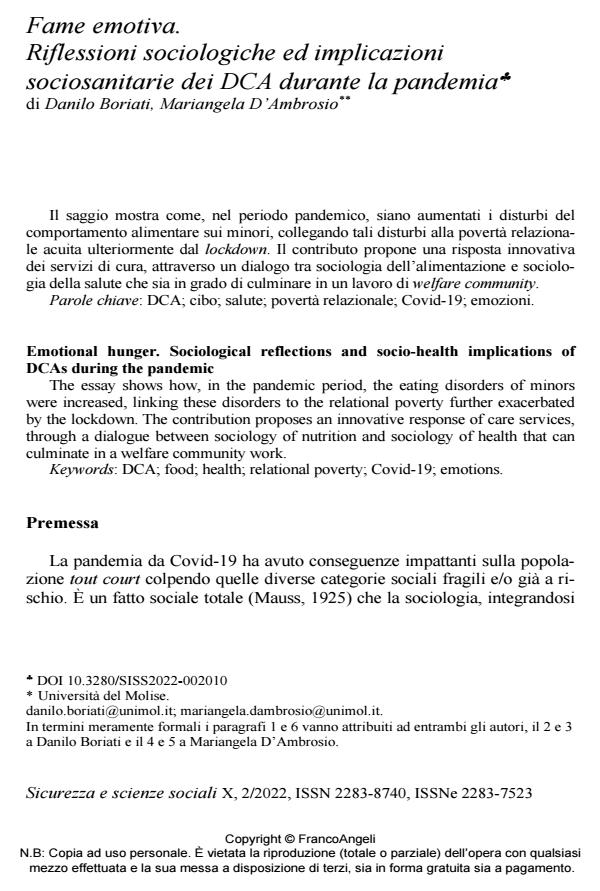Fame emotiva. Riflessioni sociologiche ed implicazioni sociosanitarie dei DCA durante la pandemia
Titolo Rivista SICUREZZA E SCIENZE SOCIALI
Autori/Curatori Danilo Boriati, Mariangela D’Ambrosio
Anno di pubblicazione 2022 Fascicolo 2022/2
Lingua Italiano Numero pagine 14 P. 140-153 Dimensione file 217 KB
DOI 10.3280/SISS2022-002010
Il DOI è il codice a barre della proprietà intellettuale: per saperne di più
clicca qui
Qui sotto puoi vedere in anteprima la prima pagina di questo articolo.
Se questo articolo ti interessa, lo puoi acquistare (e scaricare in formato pdf) seguendo le facili indicazioni per acquistare il download credit. Acquista Download Credits per scaricare questo Articolo in formato PDF

FrancoAngeli è membro della Publishers International Linking Association, Inc (PILA)associazione indipendente e non profit per facilitare (attraverso i servizi tecnologici implementati da CrossRef.org) l’accesso degli studiosi ai contenuti digitali nelle pubblicazioni professionali e scientifiche
Il saggio mostra come, nel periodo pandemico, siano aumentati i disturbi del comportamento alimentare sui minori, collegando tali disturbi alla povertà relazionale acuita ulteriormente dal lockdown. Il contributo propone una risposta innovativa dei servizi di cura, attraverso un dialogo tra sociologia dell’alimentazione e sociologia della salute che sia in grado di culminare in un lavoro di welfare community.
Parole chiave:DCA; cibo; salute; povertà relazionale; Covid-19; emozioni.
Danilo Boriati, Mariangela D’Ambrosio, Fame emotiva. Riflessioni sociologiche ed implicazioni sociosanitarie dei DCA durante la pandemia in "SICUREZZA E SCIENZE SOCIALI" 2/2022, pp 140-153, DOI: 10.3280/SISS2022-002010